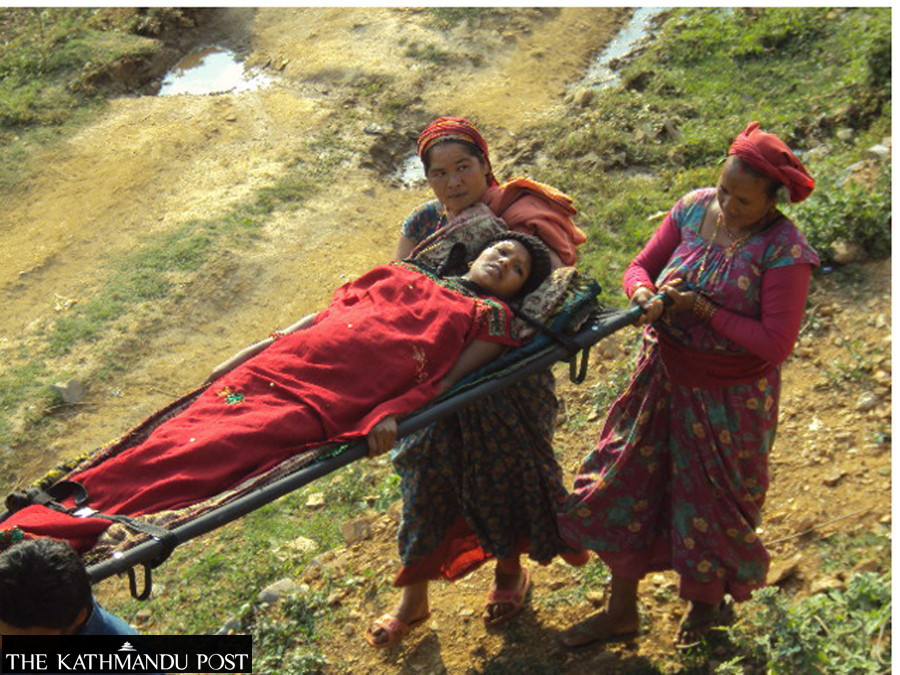Health
Maternal, perinatal death surveillance to cover 10 more districts
If the proposal is approved, the number of districts implementing surveillance drives to determine the causes of deaths will reach 55.
Post Report
The Ministry of Health and Population has been working to expand maternal and perinatal death surveillance programmes to 10 additional districts from the upcoming fiscal year.
If the planned extension is approved, the number of districts implementing the programme will reach 55, officials said.
“Due to a budget crunch, we could expand the programme only to three districts—Okhaldhunga, Bara and one in Bagmati Province,” said Nisha Joshi, an official at the Family Welfare Division of the Department of Health Services. “We have been working to expand the programme to an additional 10 districts.”
Maternal and perinatal death surveillance is a key intervention for improving maternal, perinatal, and neonatal survival. Experts say such surveillance provides an understanding of the number and causes of deaths.
The World Health Organisation said that maternal and perinatal death surveillance and response (MPDSR) is an essential quality improvement intervention, which permits the identification, notification, quantification and determination of causes and avoidability of maternal and neonatal deaths and stillbirth with the goal of orienting the measures necessary for their prevention.
According to the UN health body, systematic analyses of overall mortality trends, as well as events and contributing factors leading to individual deaths, can identify barriers in health systems and inspire local solutions to prevent such deaths in the future.
“The primary goal of MPDSR is reducing future preventable maternal mortality through a continuous action and surveillance cycle followed by the interpretation of the aggregated information on the findings, which is used for recommended actions to prevent future deaths,” says the WHO.
Nepal strives to reduce the deaths of mothers and babies. However, it lacks maternal and perinatal death surveillance in all districts.
Perinatal death is the death of a baby between 22 weeks of gestation (or weighing 500g) and seven days after birth.
Excessive bleeding after childbirth and pre-eclampsia and eclampsia (pregnancy-related high blood pressure disorders) have been identified as some of the major causes of maternal deaths in Nepal.
Likewise, prematurity (neonates born at less than 37 weeks' gestation), birth asphyxia (a condition in which a baby does not receive enough oxygen before, during, or directly after birth), and sepsis (organ dysfunction caused by a dysregulated host response to infection) are considered major reasons for neonatal deaths.
Officials at the Ministry of Health and Population say the plan to carry out maternal and perinatal death surveillance across the country did not materialise this year because of a funds crunch. The ministry had also requested aid agencies for assistance to carry out surveillance in the districts not covered by the government programme.
Nepal made remarkable progress in reducing maternal mortality between 1996 and 2016, from 539 per 100,000 births to 239 per 100,000 births. For this achievement, the country even received the Millennium Development Goals award.
The Nepal Demographic Health Survey-2022 shows that hundreds of women in Nepal still succumb to preventable deaths from excessive bleeding and high blood pressure.
The newly unveiled report shows that in every 100,000 live births, 151 women died from maternity-related complications.
According to the report, 88 maternal deaths were prevented in every 100,000 live births between 2016 and 2021.
The health target under the UN’s Sustainable Development Goals is to reduce the maternal mortality rate to 75 for every 100,000 births by 2030.




 18.12°C Kathmandu
18.12°C Kathmandu













